The Indianapolis Museum of Art (IMA), located on a large site to the northwest of the city centre, is a museum, a mini-golf course, a stately home and gardens, and a 100 acre park. It’s not the easiest place to reach by foot, but it’s definitely worth the journey. I spent many happy hours enjoying the collections and then getting out into the sun and exploring the gardens and park. Mini-golf provokes an irrational rage in me, so I gave it a miss, but I loved the format (each hole has been designed by a different artist) and families were clearly having a good time. The biggest surprise to me was the relative paucity of other visitors. A resource like this in London would be totally rammed. I’m not complaining; I felt spoilt rotten being able to enjoy the spaces with extra elbow room, but this place deserves a large and bustling crowd because it’s so damn good!

The museum collections and exhibitions are presented over three levels, with a large central atrium that showcases two spectacular installations, Sol LeWitt’s Wall Drawing No.265, recreated 2005, and Robert Irwin’s Light and Space III, 2008. The first floor has a substantial display of European and American art and design. I underestimated the number of galleries and spent about three hours noodling along, assuming I was almost done a few times, and then discovering another whole section. Far too many favourites to list them all, but it was a treat to see so many Impressionist and Post-Impressionist treasures, and I particularly enjoyed Hopper’s The Hotel Lobby, 1943, and O’Keefe’s Jimson Weed, 1936.

Across from the permanent collection is the temporary exhibition, 19 Stars of Indiana Art: A Bicentennial Celebration. The show is a survey of 19 artists and designers either from, or working in, Indiana, and includes fashion designers Halston and Bill Blass, sculptor David Smith, and printmakers Garo Antreasian and Veja Celmins (the full list is here). Effective interactives and interpretation spaces punctuate the show. For example, a craftspace, located in the Nature Lovers section, encourages visitors to make the Indiana State insect, bird or flower (the Say’s firefly, cardinal or peony, since you asked) and add it to a collective display. The exhibition ends with an immersive video installation of 10 contemporary practitioners, each speaking about one of the artists in the show and their influence.
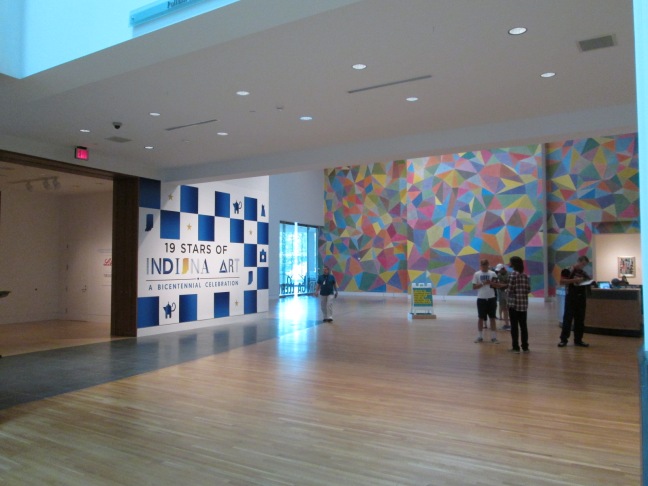
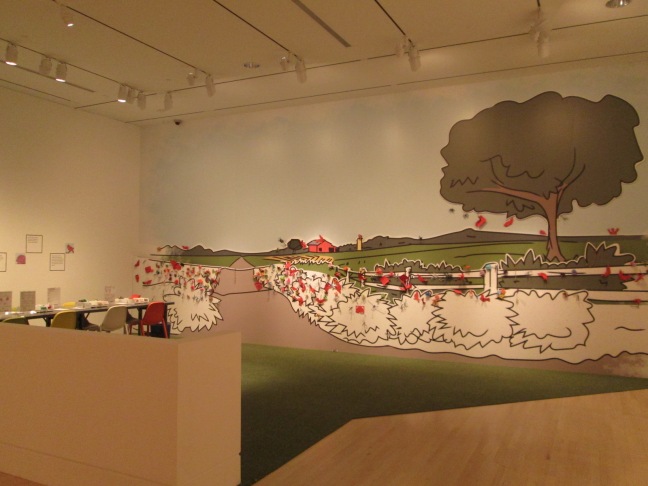
The next floor has wonderful galleries of Asian and African arts, as well as a small display of Greek and Roman art. The design galleries are also on this floor and show examples from 1980 onward. They are so beautifully presented, it felt more like a super-classy retail experience; there were so many great vantage points to scan and browse the whole room. AND, if that wasn’t enough, there was also the stunning temporary exhibition, A Joy Forever: Marie Webster Quilts. Marie Webster is the Elvis of quilting. Her designs first gained recognition when they appeared in Ladies Home Journal in 1911, and she had a huge influence on the craft by publishing books on quilting and selling her patterns. A retrospective brochure on Webster is free to download from the IMA site here. Her skill was phenomenal and to see whole rooms of these quilts was very impressive.


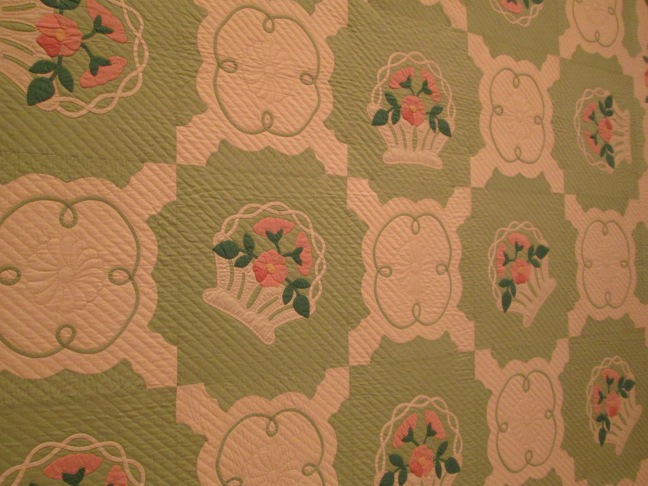
Tucked behind this show is a Textile and Fashion Arts Activity Space, which has a range of activities including a fuzzy-felt quilting activity (joy) and 10 half-size mannequins, showing how women’s dress has changed over a 200-year period. You’re actually allowed to handle this dress display, which amazed me, as the cream fabric still looked immaculate.


The top floor is devoted to contemporary art and has a mix of room-sized installations and large galleries showing a number of different artists. I have more favourites on this floor too – I would have happily taken Tim Hawkinsons’s Mobius Ship, 2006, home with me if I could, and Do-Ho Suh’s Floor, 1997-2000, which didn’t look like much until I realised it was being held up by thousands of tiny people AND visitors are allowed to walk on it. I try to resist using the F word in this blog, but unfortunately fun is the only way to describe these galleries.
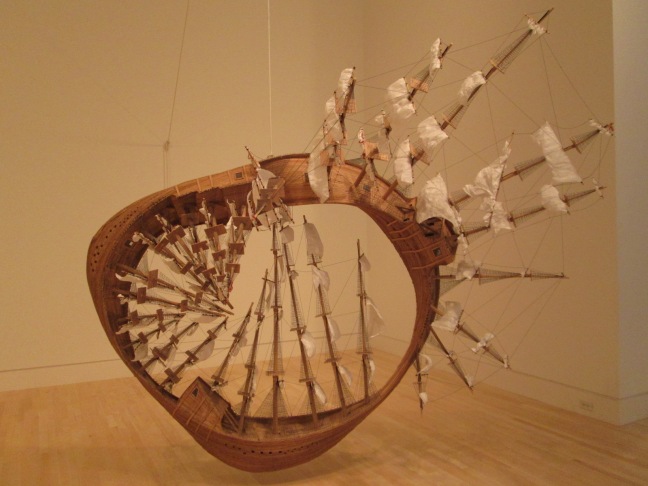



So, that’s inside. At this time of year, outside is scorching hot so the garden and park smell delicious, all warm earth and leaves. The garden surrounds Lilly House, the former home of J.K. Lilly, Jnr, the late businessman, collector and philanthropist. The whole estate is known as Oldfields. There is more information on the history of Oldfields and a photo tour of the house here.

The Virginia B. Fairbanks Art and Nature Park: 100 Acres, to use the full title, is immediately next to the Oldfields estate. I visited on a Monday morning, when the museum and garden are closed to the public, and it was nice to see the park being used by dog-walkers, joggers, and cyclists. Dotted with artworks, this was another space that I enjoyed playing in – give me a swing and a lake, and I’m happy as a clam.


As I mentioned in my first blogpost on IMA, I wanted to visit because I was inspired by Silvia Filippini-Fantoni’s comments in a Guardian article. Silvia is the Director of Interpretation, Media and Evaluation and has been at IMA for about four years. She’s had a key role in delivering major changes at the organisation over this relatively short period. Most dramatically, she’s devised a new exhibition development process. For every new show at IMA a core team is brought together, made up of a curator, a designer, an evaluator, an interpretation specialist and a project manager.
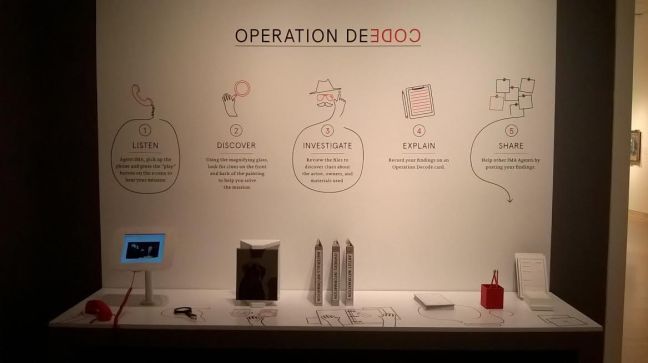
The core team thrashes out all aspects of exhibition development and planning, and audience research is absolutely fundamental to this process. This might include: formative research into the viability and interest in an exhibition idea; identifying key learning outcomes; and testing different approaches to interpretation. For every exhibition, there is a ‘Big Idea’ document to keep everyone on track. A hierarchy of learning outcomes is used to plan the type and range of interpretation formats, and to measure success. Since instigating this new approach, visitor satisfaction levels have increased and visitors are more likely to report learning outcomes that are consistent with the exhibition aims. Silvia and her team have such a strong understanding of their audiences and do a great job of using this information to improve all aspects of the visitor experience.

These changes have only been made possible with support from the top. Charles Venable joined IMA as Director in 2012 and his leadership is having a transformative effect on how the museum thinks about and works with audiences. He has the unenviable task of needing to improve financial sustainability and increase visitor figures. This has led to some difficult changes, including restructuring of staff and the introduction of admission charges, both of which have generated plenty of flak in the media. However, I believe that Charles is playing the long game and making decisions that will open the museum up to new audiences and protect its future. The organisation now places a much greater emphasis on people, and recognises that social, playful events are increasingly what audiences demand of museum experiences. By tapping into the additional potential of the garden and park, programming can also reach out to nature lovers, horticulturalists, gardeners, birders, foodies, and anyone who enjoys the nature-art combo. So much thought and consideration is going into the decisions being made at IMA and I wish them every success.
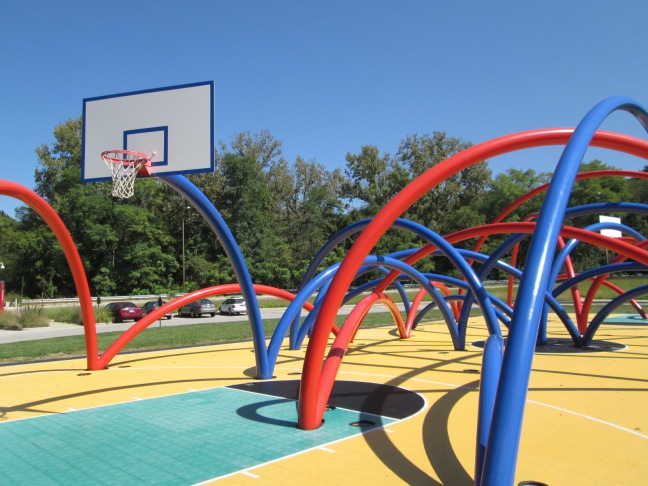
Header image: Love, 1970, by Robert Indiana, and Five Brushstrokes, designed 1983-84, fabricated 2012, by Roy Lichtenstein

Really interesting to hear about the developing connections to nature. Is there any existing or planned science programming to take advantage of this?
Also- how do I get a go at living on the island?!
LikeLike
Hi Nets,
All good questions! I know the museum is looking at the gardening angle and there are events for horticulturalists. Plenty of opportunity to get into the science of nature too.
I could do with an island myself.
Cheers, Sarah
LikeLike